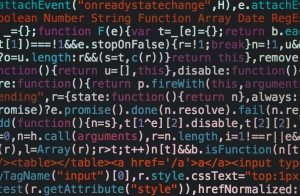Constructing Killwebs for Effects Based Targeting in Multi-Domain Operations

Speaker: COL Brian Davis (Northeast Asia Regional Fusion Cell, US Forces Korea)
Date: 9 January 2024
Speaker Session Summary
SMA hosted a speaker session with COL Brian Davis (Northeast Asia Regional Fusion Cell, US Forces Korea) as part of its SMA “Strategic Deterrence Frameworks” (SDF) Speaker Series.
A kill web is defined as a network map of a collection of kill chains. Colonel (COL) Davis used the Democratic People’s Republic of Korea (DPRK) as a case study to illustrate how a kill web can offer a comprehensive view of a multi-domain threat environment and actor decision-making calculus. He emphasized that kill webs can capture the multi-actor nature of an environment, highlighting China’s and Russia’s enablement of the DPRK and the crucial role played by US allies in the region. Allies provide the US with increased insertion capabilities, enabling more impactful and targeted activities within the kill web.
Constructing an effective kill web allows an actor to bring multi-domain capabilities to bear, empower allies, and gain the best possible understanding of adversary decision-making. By focusing on each domain, the kill web can help identify resource allocation priorities and determine which combatant command is most qualified to control operations in specific domains. COL Davis described a five-layer kill web: 1) the Geophysical Layer, 2) Logical Layer, 3) Data Layer, 4) Personal/Entity Layer, and 5) Cognitive Layer. The Cyber Domain in the Geophysical Layer is crucial, particularly for gathering data on the DPRK through satellite imagery. The Cognitive Layer was identified as the most important because it reveals the enemy’s decision-making calculus, the ultimate objective of the kill web. COL Davis outlined four requirements for generating a substantial effect on the network represented by the kill web: 1) current intel, 2) authorities and approval to act, 3) access, placement, and penetration, and 4) the capability to undertake a mission.
Speaker Session Recording
Briefing Materials
Biography:
COL Brian R. Davis is the Director of the United States Forces Korea (USFK) Northeast Asia Regional Fusion Cell (NFC) in the J3X. He has lived in Korea off and on for almost 15 years dating back to 1988 when he first arrived in Pusan, Korea for two years as a missionary. Brian spent most of his military career providing intelligence support to Special Operations Forces including 1st Special Forces Group (Airborne), Special Operations Command Korea (SOCKOR) and the Joint Special Operations Command (JSOC).
Brian’s first assignment as an Army officer in 2001 was in the United Nations Command Security Battalion Joint Security Area (UNCSB-JSA) Panmunjom, as the Executive Officer of the Joint Security Force (JSF) Republic of Korea Infantry Company and then as the JSA Battalion Adjutant. Due to his level of Korean language fluency, he was selected to serve as a backup translator in 32 meetings between the United Nation’s Command Military Armistice Commission (UNCMAC) and representatives of the North Korean People’s Army during the negotiations to build the Kaeseong Industrial Complex and open the two transportation corridors through the Demilitarized Zone.
Brian holds Bachelor of Science degrees in Economics and Political Science as well as a Masters of Public Administration (MPA) from Brigham Young University and a Masters of National Resource Strategy from the Eisenhower College at the National Defense University.
This speaker session supported SMA’s Strategic Deterrence Frameworks (SDF) project. For additional speaker sessions and project publications, please visit the SDF project page.
Comments